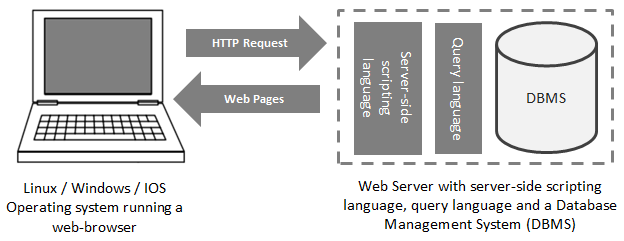
This article will focus on the Transmission Control Protocol (TCP), and Internet Protocol (IP). We'll also cover the Application layer protocol and the Stateless Protocol. This information will help you understand how to use and implement network protocols. In addition, you will get to know the history and functions of each protocol.
Transmission Control Protocol
TCP/IP combines the Internet Protocol and Transmission Control Protocol. The IP is the layer which determines how packets travel through a network. TCP is the layer which ensures reliable transmission of data over Internet-connected networking networks. The TCP layer checks packets for errors and makes requests for retransmission if necessary. This allows computers to communicate with one another.
TCP protocol is a way to reduce latency. A delay in acknowledgment from a receiving device can lead to loss of data. TCP groups data packets by segments or parts. TCP protocol demands that each segment contain a checksum fields to ensure that no two packets can be identical. If the checksum fields are corrupted, then the destination will not transmit an ACK.

Internet Protocol
Transmission Control Protocol (TCP), which is one the main protocols within the suite, is one of several Internet protocols. It was originally used for network implementation and complements the Internet Protocol (IP). TCP/IP is the common name for the entire set of protocols. TCP is a data protocol used to facilitate communication over long distances.
TCP and IP are different in the way they operate. TCP, which is not connected and acts as a datagram server, is more reliable and establishes a consistent, reliable communication session. IPv4 still remains the most used Internet Protocol. But IPv6 is becoming increasingly popular for public and private networks.
Application layer protocols
TCP/IP Protocol stack has many layers. Each layer is responsible for its own rules and responsibilities. Each layer shares data by agreeing to how it should communicate with the others. Because each layer is composed of several components, the protocols it uses to communicate data are very similar to stacking blocks. The protocols are called stacks and are therefore arranged in layers.
The application layer, which is the topmost layer in the TCP/IP protocol model, specifies the protocols used for application processes. This layer provides the necessary access and information to facilitate communication between applications. It also plays an important role in communication synchronization and resource availability. For example, the application layer allows users access the World Wide Web through remote servers. Users can also receive messages.

Protocol for stateless transactions
A server must have certain information in order for a stateful protocol to work. This is a necessity for computer applications. For example, a phone cannot browse the internet without a server. The server then mediates the requests from the client. Different protocols have different levels of dependency between the client and server. Stateless protocols have less dependency because they don't have that dependency.
Stateless protocols are more resource-efficient than stateful protocols, because they require less information to orient. Stateless protocols have their limitations. A stateless protocol may not be suitable in all cases. It may not be able, for instance, to identify the source spam message.
FAQ
What Types of Websites Should I Create?
Your goals will determine the answer to this question. To build a business around your website, you may want to focus on selling products online. This will require you to set up a strong eCommerce site.
Blogs, portfolios, forums, and other types of websites are also popular. Each of these requires different skills and tools. If you are looking to start a blog, then you need to know about blogging platforms like WordPress and Blogger.
You will need to decide how to customize your website's look when you select a platform. There are many templates and themes available that can be used for free on each platform.
Once you have decided on a platform, you are able to start building your website by adding content. You can add images, videos, text, links, and other media to your pages.
When you are ready to launch your new website, you can publish it online. Once your website is published, visitors will be able to access it in their web browsers.
Can I make my website using HTML and CSS?
Yes, you can! You'll need to be familiar with web design concepts and programming languages such HTML (Hyper Text Markup Language), CSS, and CascadingStyle Sheets. These languages can be used to create websites which can then be viewed by everyone who has an internet connection.
Are there any technical skills required to design and build my site?
No. You just need to be familiar with HTML and CSS. Tutorials that teach HTML and CSS can be easily found online.
How do you create a free website.
It all depends on which type of website it is. Are you looking to sell products online, start a blog, or build a portfolio?
It is possible to create a basic website with HTML and CSS (a combination HyperText Markup Language & Cascading Style sheetss). Although HTML and CSS can be used to create simple websites, web developers prefer using a WYSIWYG editor like Dreamweaver or Frontpage.
If you don't have experience designing websites, hiring a freelance developer might be the best option. They can help create a custom website for you based on your requirements.
Freelance developers can charge either an hourly or a flat fee. It all depends on how much work they do in a set timeframe.
For example, you might pay $50-$100 an hour to a company. Higher rates will be charged for larger projects.
In addition, many freelance websites list available jobs. It is possible to search on these websites before reaching out directly to potential developers.
WordPress: Is it a CMS or not?
The answer is yes. It is a Content Management System (CMS). A CMS allows you to manage your website content from within a web browser instead of using an application such as Dreamweaver or Frontpage.
WordPress is free! Hosting is included in the price, but you don't need to pay anything else.
WordPress was initially designed as a blogging platform but now offers many different options, including eCommerce sites, forums, membership websites, portfolios, etc.
WordPress is simple to install and configure. Download the file from their website, and then upload it to your server. Simply visit the domain name from your web browser, and then log in to the new site.
After installing WordPress, you'll need to register for a username and password. Once you log in you'll be able access all your settings via a dashboard.
From here, you can add pages, posts, images, links, menus, widgets, and plugins. If editing and creating new content is easier for you, skip this step.
But if you'd rather work with someone, you can hire a professional website designer to handle everything.
Statistics
- It's estimated that in 2022, over 2.14 billion people will purchase goods and services online. (wix.com)
- When choosing your website color scheme, a general rule is to limit yourself to three shades: one primary color (60% of the mix), one secondary color (30%), and one accent color (10%). (wix.com)
- At this point, it's important to note that just because a web trend is current, it doesn't mean it's necessarily right for you.48% of people cite design as the most important factor of a website, (websitebuilderexpert.com)
- Did you know videos can boost organic search traffic to your website by 157%? (wix.com)
- Is your web design optimized for mobile? Over 50% of internet users browse websites using a mobile device. (wix.com)
External Links
How To
What is website hosting?
Website hosting is the location where people go when they visit websites. There are 2 types.
-
Shared hosting - This is the cheapest option. Your website files are stored on a server that is owned by another person. Customers who visit your website send their requests via the Internet over to that server. The server owner then forwards the request to you.
-
Dedicated hosting: This is the most costly option. Your website is hosted entirely on one server. You and your traffic are protected by the fact that no other websites share server space.
Because shared hosting is more affordable than dedicated hosting, most businesses opt for it. When you use shared hosting, the company that hosts the server gives you the resources to run your site.
There are pros and disadvantages to each option. Here are the differences:
Shared Hosting Pros:
-
Lower Cost
-
It's easy to set up
-
Frequent Updates
-
It is available on many Web Hosting Companies
Shared hosting is often as cheap as $10 per month. However, this price typically includes bandwidth. Bandwidth refers the data that you can transfer over the Internet. Even if you are only uploading photos to your blog site, high data transfer rates can still cost you extra.
You'll soon discover why you paid so much more for your previous host when you get started. Most shared hosts provide very limited customer support. While they may occasionally assist you in setting up your site and other tasks, after that you are all on your own.
Look for a provider who offers 24/7 phone support. They'll take care of any issues that come up while you sleep.
Cons of dedicated hosting
-
More Expensive
-
Less common
-
Requires specific skills
With dedicated hosting, all you need to maintain your website are provided. You don't need to worry about bandwidth usage or RAM (random access memory).
This means that upfront, you'll need to spend a bit more. You'll soon realize that your business is self-sufficient once it's online. You'll be able to manage your servers effectively.
So Which Is Better For My Business?
The answer will depend on the type and purpose of your website. Shared hosting is best for those who only need to sell products. It's very easy to setup and maintain. You'll probably receive frequent updates because you are sharing a server hosting many other sites.
However, dedicated hosting is the way to go if you want to build a community around your brand. Instead of worrying about your traffic, you can build your brand while still being able to concentrate on your business.
Bluehost.com is the best web host for both. They offer unlimited monthly data transfers, 24/7 support, free domain name registration, and a 30-day money-back guarantee.